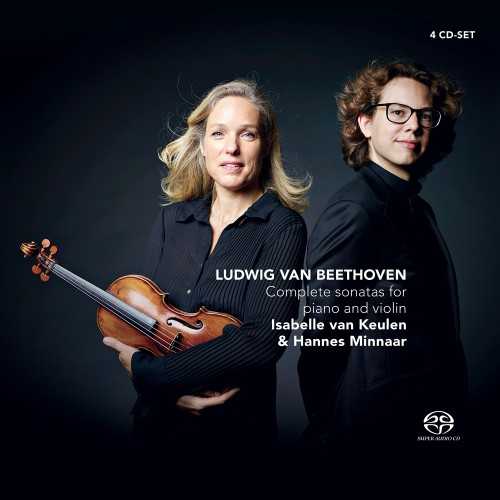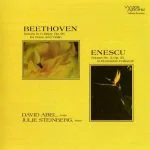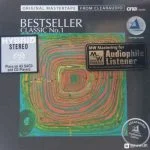
Composer: Ludwig van Beethoven
Performer: Isabelle van Keulen, Hannes Minnaar
Number of Discs: 4
Format: DSD64 (iso)
Label: Challenge
Release: 2014
Size: 11.4 GB
Recovery: +3%
Scan: yes
SACD 01
Sonata No. 1 in D major Op. 12/1:
01. Allegro con brio
02. Tema con variazioni: Andante con moto
03. Rondo: Allegro
Sonata No. 2 in A major Op. 12/2:
04. Allegro vivace
05. Andante, più tosto allegretto
06. Allegro piacevole
Sonata No. 3 in E-flat major Op. 12/3:
07. Allegro con spirito
08. Adagio con molta espressione
09. Rondo: Allegro molto
SACD 02
Sonata No. 4 in A minor Op. 23:
10. Presto
11. Andante scherzoso, più allegretto
12. Allegro molto
Sonata No. 5 in F major Op. 24, Frühling:
13. Allegro
14. Adagio molto espressivo
15. Scherzo: Allegro molto
16. Rondo: Allegro ma non troppo
Sonata No. 6 in A major Op. 30/1:
17. Allegro
18. Adagio molto espressivo
19. Allegretto con variazioni
SACD 03
Sonata No. 7 in C minor Op. 30/2:
20. Allegro con brio
21. Adagio cantabile
22. Scherzo: Allegro
23. Finale: Allegro; Presto
Sonata No. 8 in G major Op. 30/3:
24. Allegro assai
25. Tempo di minuetto, ma molto moderato e grazioso
26. Allegro vivace
Sonata No. 10 in G major Op. 96:
27. Allegro moderato
28. Adagio espressivo
29. Scherzo: Allegro
30. Poco allegretto
SACD 04
Sonata No. 9 in A minor Op. 47, Kreutzer:
31. Adagio sostenuto – Presto – Adagio
32. Andante con variazioni
33. Presto 08:31
keulen-minnaar-beethoven-complete-sonatas-for-piano-and-violin-sacd02.rar – 3.4 GB
keulen-minnaar-beethoven-complete-sonatas-for-piano-and-violin-sacd03.rar – 3.6 GB
keulen-minnaar-beethoven-complete-sonatas-for-piano-and-violin-sacd04.rar – 2.0 GB
This four-disc hybrid SACD set presents the complete works for piano and violin of Ludwig van Beethoven. The performers are the critically-acclaimed Dutch violinist Isabelle van Keuelen and the talented young compatriot, pianist Hannes Minnaar.
The original title given to the first edition of Beethoven’s Sonata No. 9 opus 47 known as the Kreutzer Sonata, refers to the piece as a work for “pianoforte with violin obligato”. This clearly shows Beethoven’s revolutionary thinking on priorities as regards the piano-violin combination, a reflection it would seem of the fact that the composer saw the music as a vehicle for his own virtuoso skills on the keyboard. The first eight violin sonatas, opus 12, nos.1-3, opus 23 and 24, and opus 30, nos.1-3, were composed between 1798 and 1802, but then, after composing the “Kreutzer” Sonata in 1803 he set the genre aside until 1812, the year in which the opus 96 sonata in G major was written.
Isabelle van Keulen has an established reputation as a violinist and viola player of world-class stature. Over the last few years she has released recordings on Challenge Classics with the pianist Ronald Brautigam of music by Shostakovich (CC72071), Richard Strauss, Respighi and Rota (CC72307), Grieg, Elgar and Sibelius (CC72171), Prokofiev (CC72580), and with her own Isabelle van Keulen Ensemble, Piazzolla (Tango!, CC72660).
Hannes Minnaar made his debut with the Netherlands Symphony Orchestra under the baton of Alessandro de Marchi at the age of 17. Since then he has performed with many leading orchestras including the Netherlands Radio Philharmonic Orchestra, Orchestre de la Suisse Romande, and the Royal Flemish Philharmonic, and worked with conductors such as Marin Alsop, Herbert Blomstedt, and Frans Brüggen. In 2013 he made his first solo appearance with The Royal Concertgebouw Orchestra in a performance of Beethoven’s Fourth Piano Concerto. Hannes Minnaar is also active as a chamber musician and is a member of the award-winning Van Baerle Trio.
prestomusic.com‘Sonata per il Pianoforte ed un Violino obligato, scritta in uno stile molto concertante, quasi come d’un concerto. Composta e dedicata al suo amico R. Kreutzer, (….) per L. van Beethoven. Opera 47.’
This was the title given to the first edition of Sonata No. 9, known as the Kreutzer Sonata. It shows Beethoven’s thinking on the piano-violin combination: the piano came first, which obviously had something to do with the virtuoso skills of the master himself on the pianoforte. Not only was Sonata Op. 47 a turning point in Beethoven’s work for piano and violin, but never before had anything been written in this manner for piano and one other instrument. Whereas the keyboard instrument had always been secondary, an accompaniment, the Kreutzer Sonata put an end to this once and for all, The first eight violin sonatas, Op. 12/1-3, Op. 23 and 24, and Op. 30-1/3, were composed between 1798 and 1802, in Beethoven’s first creative period; after the Sonata Op. 47 in 1803, at the beginning of the middle period, he set the genre aside until 1812, the year in which the hushed, reflective tenth sonata, Op. 96 in G major, was written. All in all, the ten Sonatas for piano and violin are an impassioned exposition of Beethoven’s great inventiveness, and all aspects of his composing genius are present in them: the exuberance, the humour, the love for variations (four of the ten sonatas have a movement consisting of a theme with variations and four others have a rondo as the final movement, consisting of a theme and variations), the tenderness and the mystery, in short: an inexhaustible source of inspiration!



